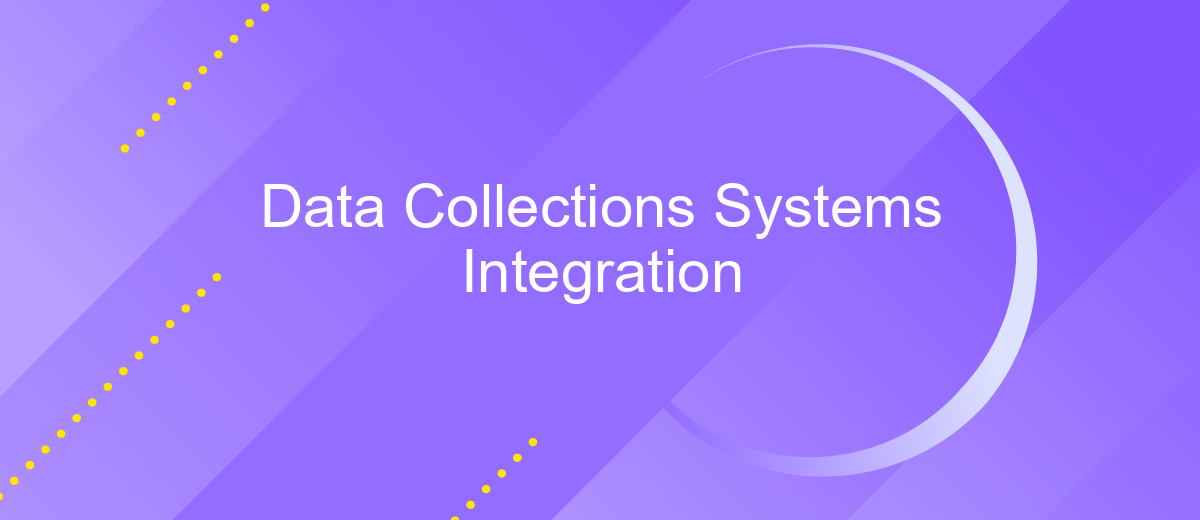Data Collections Systems Integration
In today's data-driven world, the seamless integration of data collection systems is crucial for organizations aiming to enhance efficiency and decision-making. This article explores the importance of integrating diverse data sources, the challenges involved, and the best practices to ensure a cohesive and reliable data ecosystem. Discover how effective integration can transform raw data into actionable insights.
Introduction
In today's data-driven world, the integration of data collection systems has become a critical component for organizations aiming to enhance their decision-making processes. Efficiently managing and merging data from diverse sources enables businesses to gain comprehensive insights, streamline operations, and improve overall performance. This integration not only facilitates real-time data access but also ensures data consistency and accuracy across various platforms.
- Enhanced data accuracy and consistency
- Real-time data access and analysis
- Streamlined operations and improved efficiency
By leveraging advanced technologies and methodologies, organizations can overcome the challenges associated with data silos and fragmented information. The seamless integration of data collection systems paves the way for more informed decision-making, driving innovation and competitive advantage. As we delve deeper into this topic, we will explore the key benefits, challenges, and best practices for achieving successful data integration.
Data Collection Systems

Data collection systems are essential for gathering and analyzing information from various sources. These systems can capture data from sensors, user inputs, or external databases, ensuring that organizations have the necessary information to make informed decisions. Modern data collection systems are designed to handle large volumes of data, providing real-time insights and facilitating efficient data management. Key features often include automated data entry, error checking, and integration capabilities with other software tools.
Integrating data collection systems with other platforms can significantly enhance their functionality. Services like ApiX-Drive offer seamless integration solutions, allowing businesses to connect their data collection systems with various applications without extensive coding. ApiX-Drive supports numerous integrations, enabling automated workflows and ensuring data consistency across platforms. By leveraging such services, organizations can streamline their data collection processes, reduce manual errors, and improve overall operational efficiency.
Integration Challenges

Integrating data collection systems presents several challenges that can hinder seamless operations and data accuracy. These challenges often stem from the complexity of merging diverse data sources, ensuring data quality, and maintaining system compatibility.
- Diverse Data Formats: Different systems often use varying data formats, making it difficult to standardize and integrate information without significant preprocessing.
- Data Quality Issues: Inconsistent or incomplete data from different sources can lead to inaccurate analysis and decision-making, requiring robust data cleaning processes.
- System Compatibility: Legacy systems and modern technologies may not always be compatible, necessitating the development of custom integration solutions or middleware.
- Security Concerns: Integrating multiple systems increases the risk of data breaches, demanding stringent security measures to protect sensitive information.
- Scalability: As data volume grows, ensuring that the integrated system can scale efficiently without performance degradation is a significant challenge.
Addressing these challenges requires a strategic approach, including the use of advanced data integration tools, continuous monitoring, and collaboration between IT and business teams. By proactively managing these issues, organizations can achieve a more cohesive and reliable data collection ecosystem.
Integration Techniques

Integrating data collection systems requires a strategic approach to ensure seamless data flow and consistency across platforms. One of the primary techniques involves the use of APIs (Application Programming Interfaces), which allow different systems to communicate and share data efficiently. APIs provide standardized methods for data exchange, ensuring compatibility and reducing the risk of errors.
Another effective technique is ETL (Extract, Transform, Load) processes. ETL tools extract data from various sources, transform it into a consistent format, and load it into a central repository. This approach is essential for integrating data from disparate systems and ensuring that the data is accurate and up-to-date.
- API Integration
- ETL Processes
- Data Warehousing
- Middleware Solutions
- Cloud-based Integration Platforms
Middleware solutions act as intermediaries that facilitate communication between different systems, ensuring that data is transferred smoothly and securely. Cloud-based integration platforms offer scalable and flexible solutions for integrating data collection systems, allowing organizations to manage and process large volumes of data with ease. By leveraging these techniques, businesses can achieve efficient and reliable data integration, driving better decision-making and operational efficiency.


Benefits and Use Cases
Integrating data collection systems offers numerous benefits, including streamlined operations, enhanced data accuracy, and improved decision-making capabilities. By consolidating various data sources into a single, unified system, organizations can eliminate redundant data entry, reduce errors, and ensure that all stakeholders have access to the most current and accurate information. This integration also facilitates real-time data analysis, enabling quicker responses to emerging trends and issues.
One practical use case is in customer relationship management (CRM), where integrating data from multiple touchpoints—such as social media, email campaigns, and sales interactions—can provide a comprehensive view of customer behavior. Tools like ApiX-Drive can simplify this process by offering seamless integration between disparate systems, allowing businesses to automate data flows without requiring extensive technical expertise. This not only saves time but also ensures that data is consistently updated across all platforms, enhancing the overall efficiency and effectiveness of data-driven strategies.
FAQ
What is Data Collections Systems Integration?
Why is integrating data collection systems important?
How can I integrate different data collection systems?
What challenges might I face during the integration process?
Can I automate the integration of data collection systems?
Apix-Drive is a universal tool that will quickly streamline any workflow, freeing you from routine and possible financial losses. Try ApiX-Drive in action and see how useful it is for you personally. In the meantime, when you are setting up connections between systems, think about where you are investing your free time, because now you will have much more of it.

